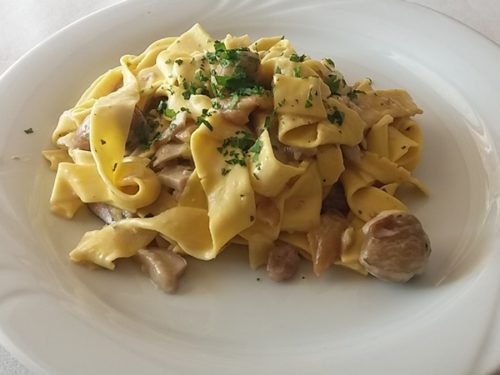THE HUMAN BODY AND THE FOODS
The Genomic Diet: 3st chapter The human body and the foods
The human body is traversed by food through the digestive, tract that starts in our mouth passes through the esophagus, goes to the stomach, exits through the duodenum before descending further into the small intestine and the large intestine, and finally, evacuated from the rectum as a waste product of digestion.
Children have 20 milk teeth by the age of 2 ½ years old. They eventually fall off at the age of six years to be replaced by permanent dentition. Permanent teeth consist of eight incisors, four canines, eight to twelve molars, and four pre-molars for a total of thirty-two to thirty-six teeth in adulthood.
The digestive system, in the human body, starts from the mouth and ends in the anal sphincter. In addition to the teeth, the taste buds are located in specific areas of the tongue that make us recognize what food tastes like.
The papillae of the tip are designed to taste sweetness. The side closest to the canines and pre-molars is inclined to savory tastes. Sour taste buds are near the internal part of the tongue. The bitter taste buds are at the end of the tongue.
The tongue also helps in digesting food thanks to the salivary glands. The largest of these are the parotid glands which emit saliva, a complex substance of water, minerals, mucus, and enzymes. It acts as a solvent and humectant to digestion, especially of carbohydrates thanks to ptyalin, a digestive enzyme.
Saliva also has anti-bacterial properties due to lysozyme and anti-bodies (sIgA secretory immunoglobulin A).
Saliva helps to remineralize teeth with calcium salts. Digestion begins in the mouth.
The proteins are broken down by the teeth, as well as carbohydrates and fats. Pre-digestion occurs due, lipase and amylase found in saliva.
Amylase deionizes food due to an enzyme called deiodinase. It’s made available to the thyroid as soon as possible since it’s necessary for iodine production. It is important to chew properly for the reasons described above because activates a “blood pumping” mechanism to the brain, thanks to the masticatory muscles.
The mouth has a pH of about 7. It tends toward alkalinity. When food is swallowed, it passes pharynx on the way to the stomach. The esophagus is about 25-35 cm long. The entrance to the stomach is called the cardias, the first sphincter that opens to let food pass through.
The pH in the esophagus is neutral. The stomach is very acidic. The pH ranges from neutral to 1-3.
The walls of the stomach need to endure a very acidic environment. They are covered with mucus. They are almost impervious to the hydrochloric acid that is responsible for the digestion of food. Pepsinogen is converted into pepsin to digest amino acids.
The food remains in the stomach a few minutes up to several hours. The pyloric sphincter connects the stomach to the duodenum. After the stomach, the food travels small parts of the small intestine at very short lengths of about 20-30 cm. But despite being limited in length, it still is of fundamental importance.
The first part of the small intestine is connected to the head of the pancreas, a gland that has massive endocrine and exocrine functions. The exocrine part produces pancreatic juices that are rich in enzymes while the endocrine part produces the hormones insulin and glucagon.
The pH of the duodenum is alkaline at about 7-8. The area is dominated by bacterial flora called Lactobacillus acidophilus.
The duodenum also has relationships with the liver and gallbladder. Bile is produced by the liver and is poured into the duodenum to emulsify fats.
The liver is the largest internal organ in the entire human body. The exocrine and endocrine gland that controls much of metabolism produces bile, controls the metabolism of carbohydrates through gluconeogenesis, glycogenesis, and glycogenolysis.
The food remains in the stomach a few minutes up to several hours. The pyloric sphincter connects the stomach to the duodenum. After the stomach, the food travels small parts of the small intestine at very short lengths of about 20-30 cm. But despite being limited in length, it still is of fundamental importance.
The first part of the small intestine is connected to the head of the pancreas, a gland that has massive endocrine and exocrine functions. The exocrine part produces pancreatic juices that are rich in enzymes while the endocrine part produces the hormones insulin and glucagon.
The pH of the duodenum is alkaline at about 7-8. The area is dominated by bacterial flora called Lactobacillus acidophilus.
The duodenum also has relationships with the liver and gallbladder. Bile is produced by the liver and is poured into the duodenum to emulsify fats.
The liver, in the human body, is the largest internal organ. The exocrine and endocrine gland that controls much of metabolism produces bile, controls the metabolism of carbohydrates through gluconeogenesis, glycogenesis, and glycogenolysis.
Here, the chyme passes through the ascending colon, the transverse colon, the descending, and the sigmoid colon. The area is mainly filled with Lactobacillus and Lactobacillus Rhamnosus Salivarius.
The food is then expelled as feces from the rectum through the anal sphincter. This short trip is to make laymen understand the concepts of anatomy, physiology, and biochemistry of the gastrointestinal system.
I would like to seize your attention to some fundamental points to make the book easier to understand.
I spoke of minerals, pH, intestinal villi, bacterial flora, immune system, hormones, absorption and endogenous detoxification.
I avoided deepening the entire anatomy, physiology, and basic biochemistry to stimulate your curiosity about these subjects. These topics are almost always forgotten when it comes to nutrition, but in my opinion, they are essential The future of nutrition will be based only on these parameters and on these indications.
Keep reading
Copyright 2018

